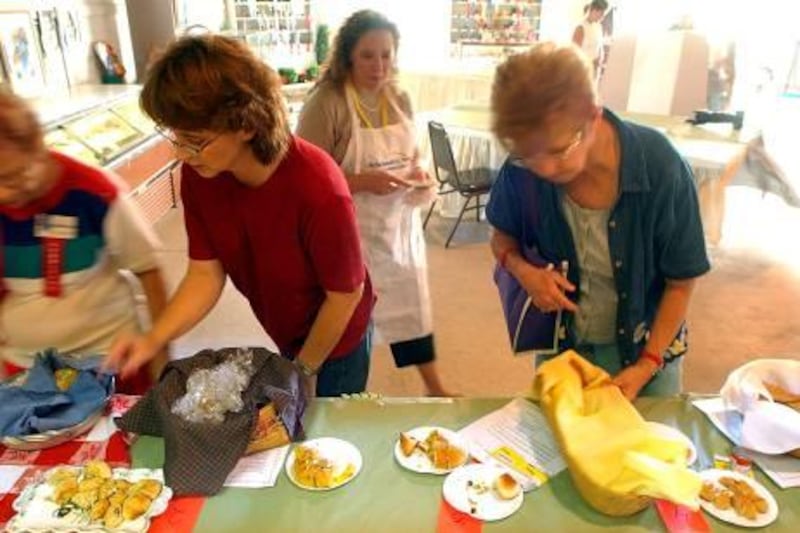SIOUX FALLS, SOUTH DAKOTA // Just across from the front door inside the Islamic Centre of Sioux Falls there is a sign that reads: "We should all be free to pray."
In this sparsely furnished single-storey building, with its otherwise bare white walls, the exhortation stands out.
Contrary to what might at first be thought, the appeal is not directed at the overwhelmingly white and Christian population of this blue-collar neighbourhood in Sioux Falls, South Dakota's largest city, with an estimated population in 2009 of 150,000. Rather, the injunction reflects the highly diverse nature of the city's small, but rapidly growing, Muslim community.
From 15 in 1990, there are now almost 3,000 Muslims improbably tucked away in the eastern-most city of this Midwestern state, most famous for the 1890 Massacre at Wounded Knee, where 150 Sioux prisoners were killed by United States cavalry, finally breaking Native American resistance to the colonial expansion of the US.
It is a population that has grown largely as a result of an influx of refugees, many fleeing fighting in Somalia, Ethiopia and, increasingly, Iraq. Combined with other more traditional economic immigrants, the Sioux Falls Muslim community is an almost perfect microcosm of the Muslim world.
However, this diversity has brought its own problems. Until last year, the classroom-sized masjid at the centre was the only Muslim prayer room in the state to cater to the growing numbers of Muslims. To date, it remains the larger of only two, both in Sioux Falls.
"We are a very mixed community," said Mohammad al Ostaz, a Palestinian, who left Kuwait in 1987 to study physical therapy in Sioux Falls. "But we're not a Pakistani or an Arab mosque. There are differences between us, and we've all had to learn to get along," he added by way of explanation of the sign at the door.
"There is a lot of ignorance about Muslims here," he said after Maghreb prayers on the first day of Eid. "There are a lot of stereotypes."
Unable to return to Kuwait after the first Gulf War, Mr Ostaz, 43, stayed in South Dakota. Though he never finished his studies, he eventually started his own translation service that now handles more than 100 languages. In his 23 years here, he said, he has always experienced negative stereotypes about Arabs and Muslims.
The stereotypes have changed - for the worse, he said. "They used to be about camels and oil and having four wives. Now, they are about terrorism and violence. The stereotypes were always negative, they've just become more so."
The negative views have been reflected in nationwide polls. In August, the Pew Forum on Religion and Public Life found that the number of Americans with a favourable view of Islam had dropped from 41 per cent to 30 since 2005. The percentage of those with an unfavourable view had climbed from 36 to 38 per cent in the same period.
Perhaps, more tellingly, the poll counted just 62 per cent of Americans who believe Muslims should have the same rights as other groups to build houses of worship in their local communities, with 25 per cent opposed and 13 undecided.
And, at times, what Ibrahim Hooper of the Council on American Muslim Relations calls an "alarming rise in anti-Muslim sentiment" finds violent expression, with instances of hate crimes becoming more prevalent. In Sioux Falls, such incidents have been rare. After the September 11 attacks, someone smeared faeces on the door handle of the Islamic Centre, Mr Ostaz said. People have called in threatening messages and a brick was thrown through the window.
Yousef al Kafiti, 47, who has lived in Sioux Falls since 1992, said he too had noticed the change. "My wife covers her hair, and we hear a lot of comments in shops like, 'Go home to where you're from, you don't belong here'," said Mr Kafiti, who is of Libyan origin. His wife is an American convert to Islam. "Even if there are no comments, I can often feel the dirty looks."
There have been efforts at outreach from the Muslim and Christian communities. Mr Ostaz said he had participated in a number of talks to residents in Sioux Falls, mostly arranged by local churches. "They've been much more organised about this than us."
He also remembered with "great admiration" a day when a local family, on an apparent whim, had come on their own to the Islamic Centre to learn about Islam.
Moreover, he said, his business had never suffered. "I never felt that anything but my competence was at issue in work. In fact, in 2006, I had my best ever year."
Mr Kafiti, who has worked for 16 years in the same plastics factory, said that while September 11 had caused a lot of harm to the Muslim community, it had also caused people to want to learn more about Islam.
"Eventually they see I'm just like them. I came to this free country to build my life and work hard."






